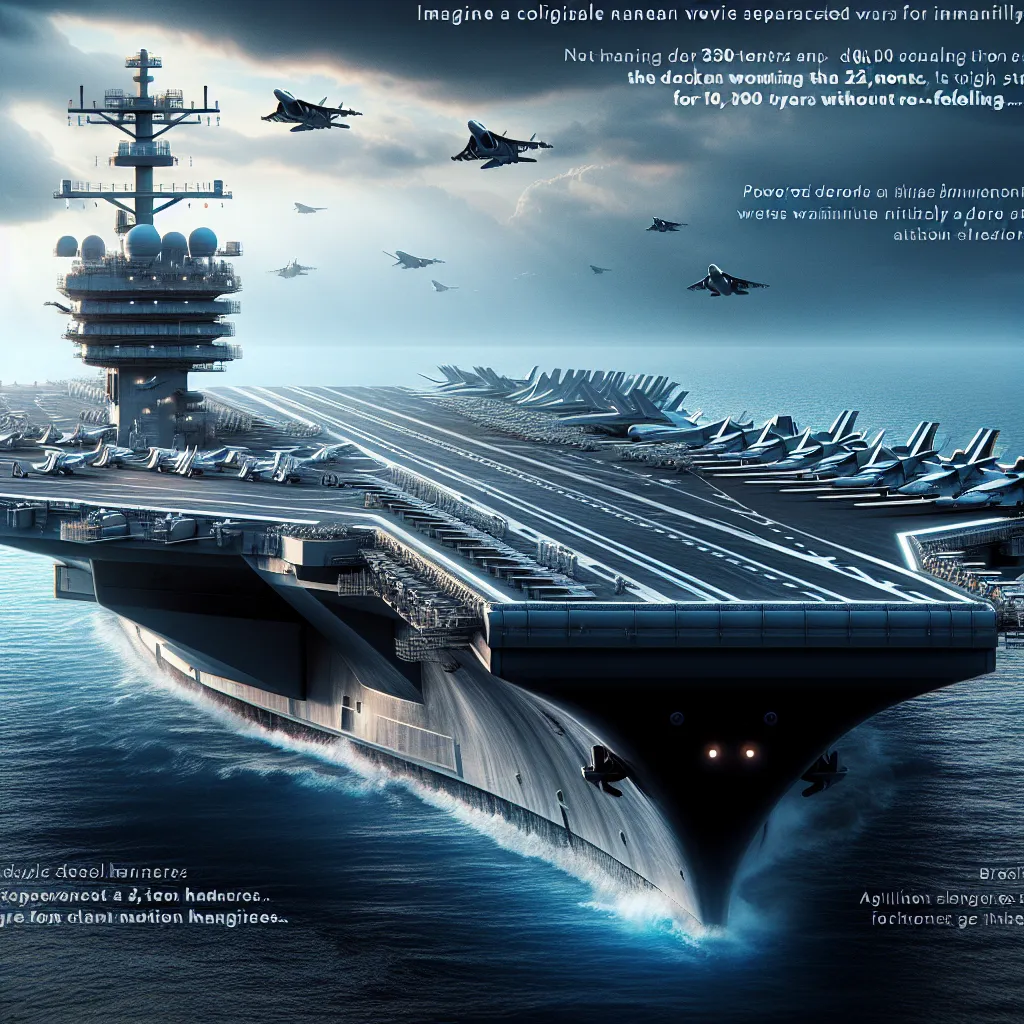As aircraft became bigger and more powerful, their fuel consumption also skyrocketed. During the Cold War, there was a significant push for warships that could operate without needing frequent refueling. Enter the nuclear reactor; it became a game-changer for aircraft carriers. With a nuclear-powered engine, the ship didn’t need fuel for its own propulsion, freeing up space to store fuel for aircraft instead.
The first American nuclear carrier was the Enterprise class, which served admirably for 50 years. The Nimitz class followed, setting new benchmarks. These giants stretch over 330 meters long, displace 100,000 tons, and house up to 90 aircraft. The flight deck itself is enormous, covering more than 18,000 square meters and towering 20 stories above the ocean. These behemoths cruise at speeds of 32 knots, effortlessly maintaining this pace for 25 years.
A warship operates under all conditions, carrying not just its crew but also weapon systems, ensuring they’re always ready for action. This means designing for survivability is crucial. The Nimitz class does this incredibly well, thanks in part to its two Westinghouse nuclear reactors, which are both modern and compact, leaving more hull space to focus on durability.
Onboard, these carriers store over 14 million liters of aviation fuel and can carry over 3,000 tons of ordnance. They come equipped with the latest passive and active defense systems. Still, the scars of World War II run deep within the U.S. Navy. Learning from the past, the aircraft hangers on the Nimitz class ships are divided into three sections with thick steel doors to prevent the spread of fire, a vital feature born from the devastating kamikaze attacks more than 70 years ago.
With ten Nimitz-class carriers once holding the title of the largest warships on the planet, the new leader in size and power is the Gerald R. Ford class. Like the Nimitz, it’s designed for a 50-year lifespan. History shows that these advancements seem only to grow larger and more capable as time goes on.






